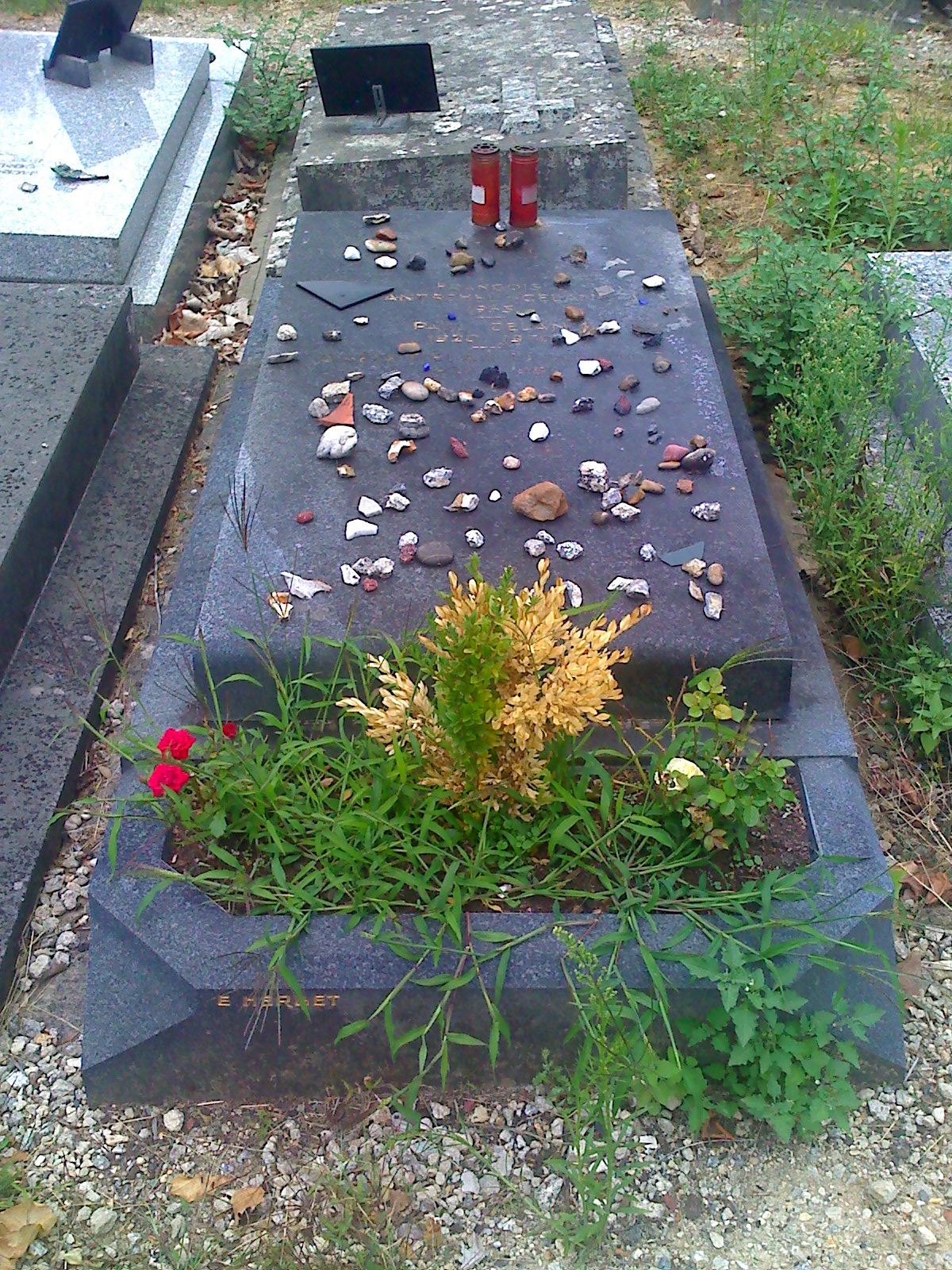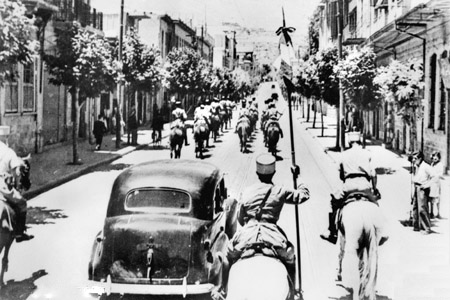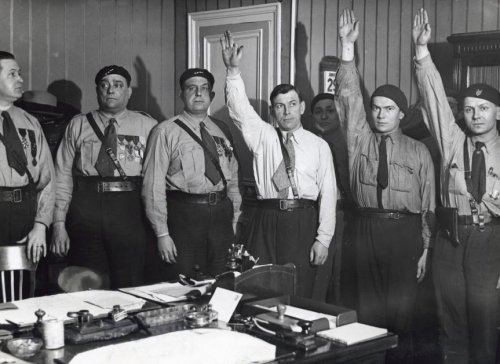|
Cimetière Parisien De Thiais
The cimetière parisien de Thiais is one of three Parisian cemeteries '' extra muros'', and is located in the commune of Thiais, in the Val-de-Marne department, in the Île-de-France region. History The cemetery was opened in October 1929 and is therefore the newest of the three Parisian cemeteries ''extra muros'', the others being the cimetière parisien de Bagneux and the cimetière parisien de Pantin. It is now a true cosmopolitan cemetery, where many faiths are represented. Size Thiais is the second largest Parisian cemetery. Only Pantin is larger. There are about 6,000 trees. The cemetery is divided into 123 numbered divisions in which there are an estimated 150,000 graves. Because the cemetery is so large, people with a walking disability can be driven around. Notable burials * In divisions 48 through 55 there are ''Jardins de la Fraternité'' which are meant for burial of those in Paris who could not afford burial or who could not be identified. Because of this it has ... [...More Info...] [...Related Items...] OR: [Wikipedia] [Google] [Baidu] |
Thiais
Thiais () is a Communes of France, commune in the southern suburbs of Paris, France. It is located from the Kilometre Zero, center of Paris. The name Thiais comes from Medieval Latin ''Theodasium'' or ''Theodaxium'', meaning "estate of Theodasius", a Gallo-Roman landowner. The Austrian writer Joseph Roth, exiled due to his opposition to the Nazi regime, lived at Thiais at the end of the 1930s and is buried at the local cemetery. The tomb of Russian writer Yevgeny Zamyatin is also there. Expatriate American journalist and novelist William Gardner Smith died there in 1974. Thiais is best known for Cimetière parisien de Thiais, its cemetery, the second largest of Paris. Population Transport Thiais is served by Pont de Rungis–Aéroport d'Orly (Paris RER), Pont de Rungis–Aéroport d'Orly station on Paris RER C, RER line C. It is also served by Choisy-le-Roi (Paris RER), Choisy-le-Roi station on Paris RER line C. This station, although administratively located on the territor ... [...More Info...] [...Related Items...] OR: [Wikipedia] [Google] [Baidu] |
National Service
National service is a system of compulsory or voluntary government service, usually military service. Conscription is mandatory national service. The term ''national service'' comes from the United Kingdom's National Service (Armed Forces) Act 1939. The length and nature of national service depends on the country in question. In some instances, national service is compulsory, and citizens living abroad can be called back to their country of origin to complete it. In other cases, national service is voluntary. Many young people spend one or more years in such programmes. Compulsory military service typically requires all citizens to enroll for one or two years, usually at age 18 (later for university-level students). Most conscripting countries conscript only men, but Norway, Sweden, Israel, Eritrea, Malaysia, Morocco and North Korea conscript both men and women. Voluntary national service may require only three months of basic military training. The US equivalent is Selecti ... [...More Info...] [...Related Items...] OR: [Wikipedia] [Google] [Baidu] |
Gisèle Lestrange
Gisèle Lestrange or Gisèle de Lestrange, and after marriage, Gisèle Celan-Lestrange (19 March 1927 – 9 December 1991), was a French graphic artist. Biography Born in Paris, Lestrange studied drawing and painting at the Académie Julian in Paris from 1945 to 1949, and then etching at the Atelier Friedlaender, in Paris, from 1954 to 1957. She became a well-known engraver, working for the Atelier Lacourière-Frélaut in Paris as of 1964. Her father, a known supporter of the Vichy regime, died in 1943. On 21 December 1952 she married the poet Paul Celan, whom she had met in November 1951. The couple had two sons, Francois (b. 1953), who died immediately after birth, and Eric (b. 1955). As of 1967, however, she and Celan lived in separate homes. As a graphic artist, she illustrated the works of a number of well-known poets. Many of her works are linked to Celan's poems. She died in Paris, and was buried in the same grave as her husband, at Cimetière parisien de Thiais. Illustrat ... [...More Info...] [...Related Items...] OR: [Wikipedia] [Google] [Baidu] |
Paul Celan
Paul Celan (; ; born Paul Antschel; 23 November 1920 – c. 20 April 1970) was a German-speaking Romanian poet, Holocaust survivor, and literary translation, literary translator. He adopted his pen name (an anagram of the Romanian spelling Ancel) following the war and resided in France from 1949, becoming a naturalized French citizen in 1955. Celan is regarded as one of the most important figures in German-language literature of the post-World War II era and a poet whose verse has gained an immortal place in the literary pantheon. Celan’s poetry, with its many radical poetic and linguistic innovations, is characterized by a complicated and cryptic style that deviates from poetic conventions. Life Early life Celan was born into a German-speaking Jewish family in Cernăuți, Bukovina, a region then part of Romania and earlier part of the Austro-Hungarian Empire (when his birthplace was known as Czernowitz). His first home was in the Wassilkogasse in Cernăuți. His father, Leo ... [...More Info...] [...Related Items...] OR: [Wikipedia] [Google] [Baidu] |
Georges Catroux
Georges Albert Julien Catroux (; 29 January 1877 – 21 December 1969) was a French Army general and diplomat who served in both World War I and World War II, and served as Grand Chancellor of the Légion d'honneur from 1954 to 1969. Life Catroux was born in Limoges, Haute-Vienne. He was the son of a career officer who had risen through the ranks. He was educated at the Prytanée National Militaire, and entered the École spéciale militaire de Saint-Cyr in 1896.Times obituary In the early years of his distinguished military career, Catroux moved from Algeria (where he met Charles de Foucauld and then Lyautey) to Indochina. In 1915, while commanding a battalion, he was taken prisoner by the Germans. During his time in captivity, Catroux met Charles de Gaulle, who was then a captain. After World War I, he became a member of the French military mission to Arabia, and then served in Morocco, Algeria and the Levant. In July 1939, Catroux was appointed Governor General of F ... [...More Info...] [...Related Items...] OR: [Wikipedia] [Google] [Baidu] |
Jean Cassou
Jean Cassou (; 9 July 1897 – 15 January 1986) was a French writer, art critic, poet, member of the French Resistance during World War II and the first Director of the Musée national d'Art moderne in Paris. Biography Jean Cassou was born at Bilbao, (Spain). His father was French (with a Mexican mother) and his mother Milagros Ibañez Pacheco was from Andalucia (Spain). His father, who had the prestigious degree ''Ingénieur des Arts et Manufactures'', died when Jean was only sixteen. His mother gave Jean and his sister basic Spanish culture, and he learnt French and Spanish classics side by side at school. Jean did secondary studies at the Lycée Charlemagne while providing for the needs of his family, then began study for the ''Licence d'espagnol'' (Spanish) degree at the Faculty of Letters in Paris. This he followed in 1917 and 1918 by getting a master's degree at the Bayonne Lycée and, though interrupted many times, was not mobilised in World War I. He was Secretary to P ... [...More Info...] [...Related Items...] OR: [Wikipedia] [Google] [Baidu] |
Marcel Bucard
Marcel Bucard (7 December 1895 – 13 March 1946) was a French Fascist politician. Early career A decorated soldier who earned a reputation for bravery in World War I, Bucard became active in politics after 1918, initially as a member of ''Action française'', an integralist monarchist far-right group, and later as a member of the overtly-fascist and anti-Semitic ''Faisceau'' of Georges Valois. In September 1933, Bucard founded his own group, the ''Mouvement franciste'', which was arguably the most extreme group and was financed by Benito Mussolini's government. During the 6 February 1934 crisis, the ''Francistes'' joined the other right-wing parties in the protests and riots in front of the Palais Bourbon provoked by the Stavisky Affair and accused of being intended as a coup d'état. In 1936, the new Popular Front government banned his movement and all other right-wing "leagues", fascist or otherwise, and Bucard was briefly imprisoned. His attempt to recreate the movem ... [...More Info...] [...Related Items...] OR: [Wikipedia] [Google] [Baidu] |
Mauthausen-Gusen Concentration Camp
Mauthausen was a German Nazi concentration camp on a hill above the market town of Mauthausen, Upper Austria, Mauthausen (roughly east of Linz), Upper Austria. It was the main camp of a group with List of subcamps of Mauthausen, nearly 100 further Subcamp (SS), subcamps located throughout Austria and southern Germany. The three Gusen concentration camps in and around the village of Sankt Georgen an der Gusen, St. Georgen/Gusen, just a few kilometres from Mauthausen, held a significant proportion of prisoners within the camp complex, at times exceeding the number of prisoners at the Mauthausen main camp. The Mauthausen main camp operated from 8 August 1938, several months after the Anschluss, German annexation of Austria, to 5 May 1945, when it was liberated by the United States Army. Starting with the camp at Mauthausen, the number of subcamps expanded over time. In January 1945, the camps contained roughly 85,000 inmates. As at other Nazi concentration camps, the inmates at ... [...More Info...] [...Related Items...] OR: [Wikipedia] [Google] [Baidu] |
Francisco Boix
Francisco Boix Campo (14 August 1920 in Barcelona – 7 July 1951 in Paris) was a Spanish veteran of the Spanish Civil War and photographer who was imprisoned in the Mauthausen concentration camp. At both the Nuremberg trials and the Dachau trials he presented photographs that played a role in the conviction of Nazi war criminals. Biography Francisco Boix was born on 14 August 1920 in Barcelona. As a Spanish Republican he was exiled in France in 1939. He was recruited by the French Foreign Legion and French Army and captured in 1940 by the Germans. Boix, like over 7,000 Spaniards, was an inmate in the Mauthausen concentration camp between January 1941 and May 1945. From the end of August 1941 he worked in the ''Erkennungsdienst'', the photography department of the camp administration, taking ID photos of inmates and documenting events in the camp. He was able to hide and preserve until liberation about 2,000 negatives taken by the SS head of the department, , as well as by him ... [...More Info...] [...Related Items...] OR: [Wikipedia] [Google] [Baidu] |
André Berley
André Berley (13 January 1890 – 26 November 1936) was a French actor. Berley was born André Edmond Obrecht in the 6th arrondissement of Paris. Selected filmography * ''The Passion of Joan of Arc'' (1928) * '' Olimpia'' (1930) * '' The Playboy of Paris'' (1930) * '' The Big House'' (1930) * '' A Lady Morals'' (1930) * '' Une audition mouvementée'' (1931) * '' Parlor, Bedroom and Bath'' (1931) * '' Der kleine Seitensprung'' (1931) * '' The Bachelor Father'' (1931) * '' The Little Cafe'' (1931) – Pierre Bourdin * ''Jenny Lind'' (1932) * '' La Perle'' (1932) * '' Coquin de sort'' (1932) * '' The Berley Brothers Boogie'' (1932) * '' Prisonnier de mon cœur'' (1932) * '' Avec l'assurance'' (1932) * ''Billeting Order'' (1932) * '' Boubouroche'' (1933) * ' (1933) * '' Le Martyre de l'obèse'' (1933) * '' La Prison de Saint-Clothaire'' (1933) * ''Caravan'' (1934) * '' The Typist Gets Married'' (1934) * '' His Excellency Antonin'' (1935) * '' Juanita'' (1935) * '' The Mutiny of ... [...More Info...] [...Related Items...] OR: [Wikipedia] [Google] [Baidu] |
Bourg-la-Reine
Bourg-la-Reine () is a Communes of France, commune in the southern suburbs of Paris, France. It is located from the Kilometre Zero, center of Paris. History In 1792, during the French Revolution, Bourg-la-Reine (meaning "Town of the Queen") was renamed Bourg-l'Égalité (meaning "Equality borough"). The name Bourg-la-Reine was restored in 1812. Population The inhabitants are called ''Réginaburgiens''. Transport Bourg-la-Reine is served by Bourg-la-Reine station on Paris RER B, RER line B. Education Public schools in the commune include: *Preschools: École de la Fontaine-Grelot, École Etienne-Thieulin-la-Faïencerie, École des Bas-Coquarts *Elementary schools: École République, École Etienne-Thieulin-la-Faïencerie, École Pierre-Loti [...More Info...] [...Related Items...] OR: [Wikipedia] [Google] [Baidu] |
Jean-Marie Bastien-Thiry
Jean-Marie Bastien-Thiry (19 October 1927 – 11 March 1963) was a French Air Force lieutenant colonel, military air-weaponry engineer and the creator of the Nord SS.10/SS.11 missiles. Bastien-Thiry attempted to assassinate French president Charles de Gaulle on 22 August 1962 in retaliation for de Gaulle's decision to accept Algerian independence. Bastien-Thiry was the last person to be executed by firing squad in France. Although the assassination attempt nearly claimed de Gaulle's life, he and his entire entourage escaped injury. The event is depicted in Frederick Forsyth's 1971 novel '' The Day of the Jackal'' and in the 1973 film adaptation of the same name, in which Bastien-Thiry is portrayed by actor Jean Sorel. Life Bastien-Thiry was born to a family of Catholic military officers in Lunéville, Meurthe-et-Moselle. His father had known de Gaulle in the 1930s and was a member of the Gaullist RPF. He attended the ''École polytechnique'', followed by the '' École nati ... [...More Info...] [...Related Items...] OR: [Wikipedia] [Google] [Baidu] |



